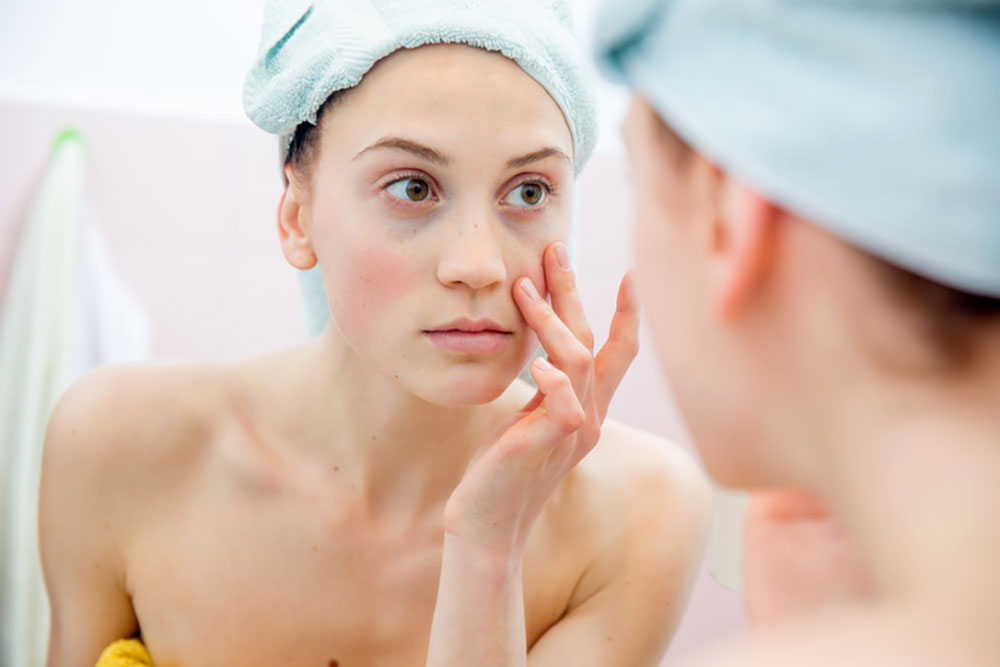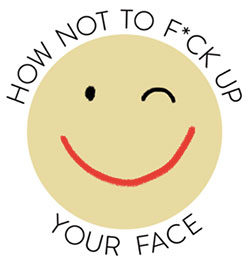By Valerie Monroe
If you’re interested in feeling happier about your appearance—especially as you age—you might like reading what she has to say about it. For more of her philosophical and practical advice, subscribe for free to How Not to F*ck Up Your Face at valeriemonroe.substack.com.
Q: I’VE READ more readers are writing in with under-eye questions, so I’m adding mine to the list. I’ve been on an under-eye journey for the last 6 months, trying to find the right makeup combo that covers my blue-green under-eye situation without highlighting fine lines. You and a lovely younger co-worker have helped. Now, I’m using an eye cream, then Sigma color corrector, followed by Maybelline Makeup Eraser and translucent powder. The issue is that sometimes, because of the texture or something, I can peel the whole routine off. What am I missing? Am I using the wrong products?
A: I admire your persistence and the earnestness of your approach, Dear Reader! I’m glad you’ve made use of HNTFUYF Resident Makeup Artist Barb Stone’s excellent advice. But as with most generalized advice, there’s often a fly in the ointment (or the eye cream). So I emailed her your question.
“It really is a journey, this under-eye business, isn’t it?” Barb said. “As time goes on, it seems like we need a different kind of concealer every day, so the search continues!”
Being the monogamous type, I hope we can find one we can live with for at least a few years.
Barb has a suspicion about what’s going on with your product combo. “When you layer an eye cream, a color corrector, a concealer, and then a powder, it makes sense to me that it peels off or pills,” she said. “Often, and especially in the under-eye area, layering products with different formulas can cause that. For instance, an eye cream that’s more of a gel (often suggested for puffiness) doesn’t play well with a full-coverage creamy concealer. Also, concealers or foundations with a silicone-y feel (I’m not a cosmetic chemist, so I’m not sure which ingredient causes that texture) glide on easily but can make it nearly impossible to layer or touch up with creamier products.”
I’m not a cosmetic chemist either, but I know one of the ingredients that give a product what’s called in the industry “slip,” or as Barb says, “that silicone-y feel,” is usually a silicone—particularly dimethicone, which can make a product more prone to pilling.
“My go-to will always be Nars concealers, both the Soft Matte Complete Concealer and the Radiant Creamy Concealer, because I can layer them with other products or mix them with an eye cream,” said Barb. “The colors are fantastic for creating a flattering shade.
“If your skin is dry and you like products that do double duty, you might try Monika Blunder’s Blunder Cover—I’m a huge fan. Its buildable coverage makes it easy to blend and layer anywhere on the face.”
Barb also offers an application suggestion: Don’t use a blender or a sponge to apply concealer or foundation. Synthetic brushes work without sucking the moisture out of the product. Better yet, use your fingertip: The warmth of your skin helps the blending process.
“You didn’t specify which translucent powder you use, but try Laura Mercier Secret Brightening Powder for Under Eyes,” said Barb. “It’s lightweight and gets the job done. Apply it with a pony-tail shaped eyeshadow brush that has loose, fluffy bristles rather than tightly packed ones. Before you add powder, gently blot your under-eye with a tissue to remove excess moisture and reduce cakiness.”
I’m not a fan of eye creams, because a facial moisturizer works for the eye area just as well, so you don’t need to spend the extra cash. But there are exceptions . . . which you can read about next week. Evidently, dry skin around the eyes is a common complaint at the optometrist’s office.
Also coming up, because it’s a bugaboo for many: jowling. My first thought: It sounds too much like howling. We should pronounce it like bowling. Jollier, right? Maybe we can make it, like, more fun.


